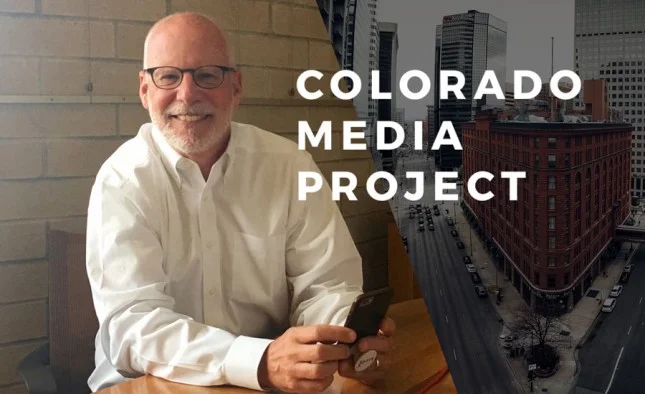This article was originally posted July 20, 2018, in The Colorado Independent.
By Susan Greene
JB Holston is the dean of the University of Denver’s School of Engineering and Computer Science. He’s also a diehard news junkie who this summer is leading the Colorado Media Project, an effort to research and test new ideas and digital tools to revitalize the state’s “news ecosystem” at a time when traditional newsrooms are withering. The Colorado Independent’s Editor Susan Greene sat down with him this week to discuss the project.
Greene: I’m guessing there are readers for whom your title at DU screams “EGGHEAD.” So please talk a bit about your ties to the news business.
Holston: I’ve been in and around the media business on and off since college – basically for as long as I’ve been in business. I worked for NBC not long after college. I launched Yahoo! Europe while running Ziff Davis’ international operations in the early ‘90s. I was part of the launch team for CNBC at NBC in the ‘80s. And I was an early blogger. Every time there’s another evolution of something that’s in the intersection of tech and media, I’ve either been involved in it or been really interested in it as a greater opportunity to share information and ideas faster. I’ve found that these new media are even more useful both as a creator and consumer of news.
Greene: You happen to be one of the biggest news junkies I know in Colorado. How exactly do you consume news?
Holston: Twitter is my first place to go in the morning. I follow about 500 journalists on Twitter – people I’ve really carefully picked. I’m talking about reporters at the intersection of China and artificial intelligence – which is a really critical topic and there are some great journalists covering that topic – all the way to any Colorado–based journalist that I can find. So I wake up and scroll through everything I can on Twitter, and then I go from there to the underlying articles that interest me. I also read email newsletters, like from Axios, Brookings or you (The Colorado Independent). I find that to be a really, really efficient second stop for news. I do still subscribe to more traditional forms of media like magazines and newspapers, as well. But I find myself going to those in their traditional, printed format less and less.
Greene: What inspired the Colorado Media Project? And why now?
Holston: In the spring, a lot of people who were then at The Denver Post called and said we’ve got to do something. And out in the community, there was a shared concern that scrutiny is on the decline. If we don’t do anything, there’s a real risk that we’ll have really insufficient scrutiny of our public institutions. The conversation really quickly focused on two things. One was should we buy The Post. A bunch of us thought a lot about that. But that conversation is a waste of time because the current (hedge-fund) owner of The Post is unapproachable and not going to sell. The second thing is that the value of newspapers, what they’re actually worth, is questionable at this point. That’s not just my opinion. It seems to be the consensus. Even Warren Buffet, who owns something like 30 newspapers, has said in the last few weeks that he can’t make the newspaper business work. So instead of sitting around thinking about the old newspaper model – a really old-school method of dispensing information – the collective conversation led to how do we develop and support new ways of distributing news Coloradans need.
Greene: As you’re having these conversations, are you hearing push-back or reluctance about giving up on print newspapers?
Holston: Oh yeah. What I think has been especially hard in this conversation is that people have difficulty separating print from the job of journalists … and understanding that journalists don’t need an attachment to tangible paper to do their jobs.
Greene: You’ve described the Colorado Media Project as “an agile, rapidly iterative, prototype-based, limited-duration project method.” What concretely are you trying to accomplish?
Holston: For me, the agenda here is really to accelerate successful, sustainable innovation in the market. And I believe we’re one of the initiatives contributing to changes we’re already seeing. There’s a lot of great innovation happening fast right now: the upcoming launch of The (Colorado) Sun, new formats and events and people involved with you (The Colorado Independent), Denverite and others. We’re trying to open this process up as much as possible to as many people as possible in the market so people can share some interesting thoughts about best practices and make serendipitous connections they didn’t have before.
Greene: All toward what end, specifically?
Holston: Toward scaling scrutiny.
Greene: Scaling scrutiny?
Holston: By that I mean this: If you think of the way that newspapers were a collective conscience and voice of the community, the way they allowed the community to engage with and scrutinize power and institutions, that has all been atomized by (the emergence of) smaller digital news outlets. The impact is less when outlets are siloed and small. We need to bring that kind of scrutiny to a sustainable scale. And by that I don’t mean the model of a billionaire owning the big media outlet in the state, because that has its own risks and isn’t proven to ‘work’ for regional news. But my point is that scale is what we’re talking about here.
Greene: What kind of scale are you aiming for?
Holston: Getting a half-million Coloradans engaging in a news source every day.
Greene: Why set a goal of a half-million readers in a state with almost six million residents?
Holston: If you look at the daily readership of The Post back in the day, it had half a million readers.
Greene: But digital media can go far beyond newspaper readership in that it’s more accessible. Why not dream big?
Holston: You’re absolutely right. With digital, in theory, there’s no reason why everyone shouldn’t have access. So let me rephrase that. It should be a minimum of a half-million readers a day. I think the only way you can reach that scale is through tech. It’s not that you can’t do the reporting scrutiny thing and have a smaller audience and still do a great job journalistically. But I feel and others in the project feel that the value of scrutiny is greater the more people see it. And we’re concerned the approach of slowly building an audience by creating a lot of great content slowly over time is insufficient. There’s a question of whether that will ever scale. Some people say it’ll never happen and that you need to figure out how to build something very big very fast.
Greene: What might something very big and very fast look like?
Holston: Creating the right format for the right audiences. For example, there’s data showing that young Latinas are tremendous news and information consumers and sharers via mobile online videos. If you have a service with young Latina YouTubers creating three-minute video snippets about what’s happening in Colorado every day, there’s certain to be an audience.
Greene: What about news and issues that take more than very short video snippets to explain?
Holston: I would argue… that delivering complex news in short, more snackable ways can be done. If someone’s going to take weeks working on an investigative piece that would be 10,000 words on some topic, that doesn’t mean there aren’t lots and lots of ways to condense – or at least tease distribution of – that.
Greene: What do you say about the fact that, aside from a few legacy newspapers like The Washington Post and The New York Times, there are virtually no news outlets making profits by doing watchdog reporting and public interest news?
Holston: I would argue that just because there are no models for digital outlets profiting from public interest news doesn’t mean we can assume there’s not a possible intersection of those two. We should all share best practices toward the objective of scaling scrutiny as rapidly as possible. Technology has changed consumption and production and distribution faster than everyone has realized. Let’s consider that deeply.
Greene: And it’s those questions – which are the million-dollar questions in our business right now – that are at the heart of the Colorado Media Project?
Holston: Yes, those questions. And other questions, too. Like beyond new product opportunities, are we missing some connective tissue? What if there was a one-stop shop for everyone in Colorado to subscribe to all news outlets? Or one place where everybody doing journalism could rub elbows and collaborate? Are there things that could be done to encourage that collaboration?
Greene: You’re talking about bringing scrutiny to scale by investing in tech and business innovation and infrastructure. But aren’t you missing the most key element – the actual reporting by professional journalists capable of doing the kind of hard scrutiny and digging you say underlies all this?
Holston: That’s a really good question. And it’s a question we’re asking: How much of this can get addressed through tech, and how much is about supporting entities that are out there already to produce at greater scale?
Greene: You’re holding meetings about these questions this summer, including a meeting this Saturday. What happens after these meetings?
Holston: We’ve had in-depth interviews with about 40 deeply experienced Colorado media professionals who have over 500 years of collective experience. We’ve been completing ’empathy interviews’ around the state this last week. And the Boston Consulting Group has provided great pro-bono help rounding up secondary research and is about to oversee the launch of a 2,000-person piece of primary Colorado research for the project. We’re having our third ‘open innovation’ session this Saturday. We have design-thinking experts from Stanford overseeing a human-centered, community-involved design process.
We’ll also be holding a couple of community conversations in August with experts from outside Colorado. Once we come up with prototypes and market research and business planning, which will happen by the end of the summer, we’ll report out, release everything to everybody – all the research – and we’ll open-source it. We’re not trying to be anything other than generative in the community. We’re not planning on making the things we’re prototyping. But still, at some point, we’ll collectively get together to consider whether there is a Phase II. I don’t think we know enough to know what Phase II looks like yet. Folks will figure out where it ought to go.
Greene: What, after all this, would success look like to you?
Holston: Hmmm. I’d say success would be that in three years, we all look back and say Colorado isn’t bereft of critical, sustainable scrutiny. Yeah, three years. Maybe that’s doable.
Top image: Photo of JB Holston by Susan Greene. Colorado Media Project logo and Denver photo via the Colorado Media Project website.

